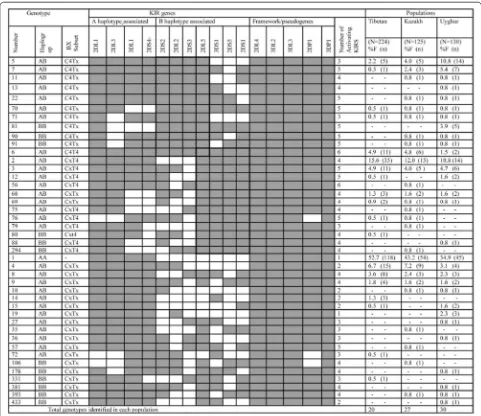KIR diversity in three ethnic minority populations in China
Full text
Figure




Related documents
2 In this paper, “consent form” generally refers to a form that authorizes the employer and/or its representatives and agents to collect, use and disclose an employee’s
including registration number, name of operator and the different species of animals for which each plant are approved to slaughter…...……….……….6 Table 1.3: Some
Recovery for large storage objects will be handled using a combination of shadows and logging - updated internal pages and leaf blocks will be shadowed up to
The adjusted schedule (Figure 2.5b) shows how the contractor changed the start time of activities A and F (using leveling-delay values) to avoid resource over-allocation.
The Maximum Entropy model was successfully applied to evaluate single susceptibility maps for gullies, sheet erosion, and Badlands using a set of predictors derived
After presenting research done on Graph Colouring Reconfiguration and some variants, which is the most relevant to our work, we now follow results on other reconfiguration
This study will result in a benchmark analysis of programs, vocabulary, tools, and curricula for training design leaders and ultimately define the future path of design
This unowned land becomes owned, a private property, when an individual “mixes labor” with the unowned land .in essence , Locke arguments in support of private property is

